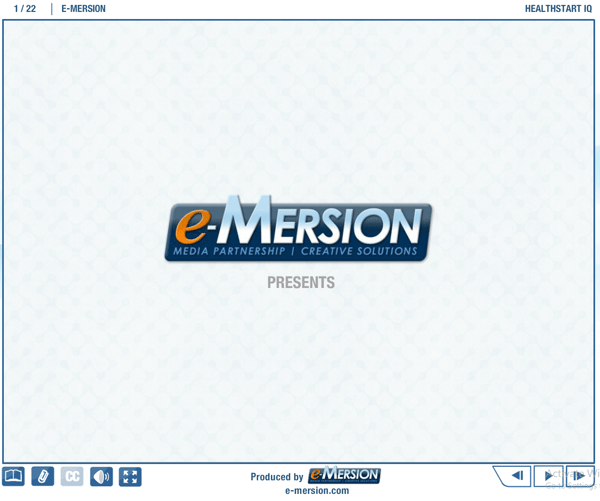The First 5 Must-have Elements in a Structured eLearning Journey

If you were to explain a newbie what instructional design in eLearning is, you might say, ‘it is the process of designing, developing and delivering eLearning resources and courses.’ However, we all know this will be an oversimplification of what’s involved in instructional design in eLearning – the efforts that go into designing and developing effective eLearning experiences.
After all, if learning was that easy, you wouldn’t need to spend your precious training budgets on developing eLearning courses. Your learners could possibly be self-trained, reading Wikipedia pages!
The First 5 Must-have Elements in a Structured eLearning Journey
- Creating awareness and fostering readiness
- Gaining attention of the learners
- Stimulating recall of prior knowledge
- Presenting new information
- Demonstrating the learning
The art behind creating memorable eLearning experiences so that knowledge is appropriately distributed and retained in learners’ memory has more to it. Our mantra is to perceive learning as a journey where learners make their way from, ‘I can’t do this’ to ‘I can do this really well.’ And much like the essentials you would ensure in your backpack for smooth traveling, there are elements in a learning journey which can accelerate learners’ time to proficiency. Incorporating these elements in eLearning will ensure your learners’ path to application at the workplace is bump-free.
There are 10 elements that make a learning journey complete. This blog covers the first 5 elements and the next 5 will be discussed in a subsequent blog. So, are you all set to explore these elements and how to use them in eLearning? Let’s get started!
5 Must-Have Elements in a Structured eLearning Journey
1. Creating Awareness and Fostering Readiness
Even before you rollout your eLearning courses, it’s always a good idea to build learners’ interest. It’s more like building a “buzz” about the forthcoming courses and getting your learners excited about the advantages they have in store for them.
Having said so, raising awareness about eLearning courses should start way before the launch date. In fact, you should start marketing your eLearning courses the day you decide to create them. This provides your organization ample time to foster readiness and spread the word about how learners will benefit. And in case, if you aren’t sure of how to build the buzz for online training courses, here are some useful tips:
Leverage the Power of Video Trailers: Movie trailers are a thing of beauty. I am sure you will second me on that. They are perfect when it comes to conveying the important parts of the movie’s plot and leaving you wanting for more.
Similarly, you can create video trailers to raise awareness and pique learners’ interest in your eLearning venture. Use it to highlight key takeaways, benefits, or probably show them a couple of screenshots of an interesting scenario, flowchart, or even the learning objectives of the eLearning course to gain the attention of learners.
Use Social Media Platforms: Like millions of people, your learners also use social media sites, be it Facebook, Twitter, or LinkedIn. So, why not use these additional touchpoints to build an online presence and market your eLearning courses?
The secret is to post resources such as surveys, questions, micro videos, or an interactive infographic regularly and set the ball rolling for online discussions. The more learners indulge in online discussions, the more you are gearing them up for the eLearning journey ahead.
2. Gaining the Attention of Learners
The best movies and books begin with strong openings that grab peoples’ attention. Similarly, it’s important to start your eLearning course with a bang. You can present a stimulus to gain learners’ attention and encourage them to move ahead in the learning journey. Now, this can be accomplished in a myriad of ways. Here are some for you to pick from:
- Present recent statistics and interesting facts that take them by surprise
- Show a microlearning video that works perfectly as an introduction to the course
- Pose thought-provoking questions that stimulate their brain
- Introduce your topics as a story that resonate well with learners
- Present a relevant challenge or a problem that piques their interest
The trick is to keep it short and simple, just enough to make learners curious. Here’s an example of an intriguing introduction that presents facts in the form of a personal narrative.

Visit this link to view the course: http://demos.articulate.com/elearning/Diabesity/player.html
3. Stimulating Recall of Prior Knowledge
According to the theory of Constructivism, new knowledge is contrasted with the old. Hence, it’s imperative to make connection between what’s being presented to your learners and their prior knowledge or experiences. It helps them absorb information much faster and ingrains it in their long-term memory.
Different ways to stimulate recall of prior knowledge includes:
- Use analogies or metaphors to help learners link, relate, and contrast new knowledge with existing knowledge. They create a scaffold in learners’ mind which helps build new information on top of the old.
- Present a problem or scenario where learners are prompted to utilize their existing knowledge to resolve issues. For instance, in an eLearning curriculum, learners will have to draw on the learning they have gained from a previous level of the course. And in case they are unable to successfully resolve the problem or scenario, provide them with effective reinforcement.
- Offer pre-assessments to evaluate the level of knowledge they currently possess and then construct new learning experiences that build on that knowledge.
The bottom line is to build on what your leaners already know in contrast to starting from scratch. It will allow easy comprehension and retention of new information.
4. Presenting New Information
Here comes the meat of your eLearning course. This is the milestone in the learning journey where new content is presented to learners. The content can be facts, concepts, procedures, principles, processes, and more. Now, there are various ways when it comes to how you want to present the content.
However, the battle is only won when the right instructional design strategies are put to use. This includes aligning the content and assessments with the learning objectives, organizing content in a logical way, engaging learners using variety of media and styles. And in turn catering to the pertinent needs of your learners.
Here are some popular instructional design strategies:
Storytelling: A powerful approach to hold your learners’ attention, creating an engaging and emotional learning experience. Storytelling in online training offers in-context learning using elements such as a strong narrative, intriguing plot, relatable characters, climax, and strong message at the end. You can use it for training such as sales, safety, and compliance.
Scenario-based Learning: An active learning stagey that challenges learners to take appropriate decisions, bringing about a change in behavior and performance. Here, learners have to utilize their critical thinking and decision-making skills, drawing on their knowledge to successfully make their way out of a situation.
Gamification: It involves the usage of badges, points, rewards, leaderboards and other gaming mechanics to engage as well as motivate learners while presenting the content in a fun way.
Interactive Videos: Adding interactions in your videos by placing markers, links, or hotspots at strategic points. These interactivities can reveal more information, pose questions, and much more.
5. Demonstrating the Learning
Remember the ‘show and tell’ sessions back in school? There will be some topics such as product knowledge where this still principle works well. Demonstrations help bring life to processes and procedures that are otherwise hard to understand by merely taking an eLearning course. For instance, learning how to operate a piece software is never complete if learners don’t get to do it.
Hence, here’s sharing some ways you can demonstrate the learning for learners to experience it:
Watch-only Simulations: Simulation-based training enables your learners to learn through simulated environments that mimic real-life applications. And watch only-simulation demonstrates how something actual works or is operated.
For instance, watch-only simulations are perfect for software training where your learners see how it works. Doing so ensures you leave nothing to learners’ imagination.
Video Demonstrations: Video demonstrations help simplify complex tasks that allow learners to mimic desired behavior. It’s a much more powerful way to show learners how to accomplish something rather than showing them static images. For procedures and tasks that demand multiple steps and physical action, eLearning video demos can show how to do it, along with narration.
Learners also have the ability to pause, rewind, and slow the track if they didn’t get it right in the first go. For instance, video demonstrations work great for physical demonstrations or handling equipment and products. Moreover, different camera angles have the potential to show more detailed views.
It’s Wrap Time!
While the first three elements are about preparing your learners for the learning journey, the next two are about providing instruction. The journey doesn’t end here. There are 5 more elements to be explored. The next steps include offering practice, feedback, reflection opportunities, assessments, and finally helping learners transfer knowledge to work. Watch this space for the next blog!
Meanwhile, here’s something you can read to know more about how to create engaging eLearning courses. Download this free eBook on “Instructional Design Strategies to Design Engaging eLearning Courses” to gain insights on different types of instructional strategies and tips to select the right strategy.





